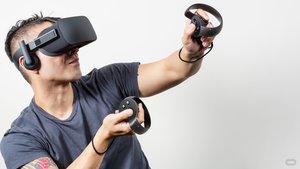 After making its name with a software program that converts 3D building models to virtual reality (VR) settings in the blink of an eye, New York City-based start up IrisVR is returning with desktop software that supports fully immersive, multi-user VR experiences for users of the program, known as Prospect.
After making its name with a software program that converts 3D building models to virtual reality (VR) settings in the blink of an eye, New York City-based start up IrisVR is returning with desktop software that supports fully immersive, multi-user VR experiences for users of the program, known as Prospect.
In a nutshell, the software transcends geography by immersing stakeholders in different locations in the same virtual environment at the same time, with audio features allowing architects and engineers to guide owners, contractors and subcontractors through pre-constructed spaces, according to IrisVR Co-founder, President and CEO Shane Scranton. (You might remember Scranton, who spoke on a panel at our Summit this year.)
Virtual teleconference: IrisVR’s multi-user program immerses multiple stakeholders in different locations in the same vitrual environment, where they can engage in dialogue and decision making while engaged in walk throughs. Among other benefits, the program reduces travel costs and travel times/

So, go ahead and cancel those travel plans, he advised, noting the program eliminates the time and costs of travel, whether across state lines or a single, sprawling metropolis. By placing project team members on the same virtual page, the walk throughs can assist in identifying errors and creating punch list items, in addition to generating dialogue on how to best negotiate architecturally complex forms or complex buildings such as data centers and hospitals, Scranton noted. “If you are a health care architect, you can now invite a physician or nurse into a collaborative and intuitive environment of the proposed design,” he said. “Then you can engage in a dialogue about space to evaluate the impact of decisions prior to construction.”
The technology marks a potentially significant advance in health care design, given that project teams traditionally have relied on full-scale mock ups of nurses stations, patient rooms and the like to evaluate plans pertaining to operating efficiencies and patient comfort.
IrisVR’s collaborative tool can achieve similar results via export of a multiplayer file via email or drop box and use of either HTC Vive or Oculus Rift to initiate feedback between designer and end user.
The program also is intended to enhance job site safety by simulating site conditions, including the position and movement of construction equipment such as cranes, and the location and actions of crews relative to the equipment and other conditions, according to Scranton.

In all, the multi-user software required about a year develop, with programmers placing special emphasis on establishing stable, reliable connection lines among end users, optimizing audio functions, and creating representations of where participants are situated within the virtual realm.
At present, the program can accommodate four parties at a time, though the number will spike as IrisVR fine tunes certain functions, including methods to ensure that users don’t stray during tours. “That’s something we’re working on – how to corral participants through the VR experience should they go wandering off,” Scranton said.
Should the multi-user experiences result in alterations, designated parties can return to the 3D models generated by Revit, SketchUp and others, modify them, then interface with IrisVR’s Prospect to create VR visuals reflecting the updates. The process doesn’t require much time. With the mere click of a launch button, Prospect initiates mesh compression, texture compression and other processes that can convert entire 3D files to a VR formats in seconds rather than hours, even days, as some conversion programs require.
“The trade off is resulting VR visuals are somewhat schematic in nature – nothing you would want to use for purposes of marketing,” Scranton acknowledged.
Rather than a brainchild of IrisVR, Scranton notes its multi-use VR tool is a response to user feedback. “It literally was the most requested feature of the past year,” he said, noting that as A/E/C-oriented VR enterprises continue to proliferate, some likewise seeking to develop lightning-speed 3D-to-VR conversions, it’s essential the enterprise continues to lead rather than follow.
Everybody Watching?: Only a small percentage of the A/E/C community currently engages in VR during project planning, though Scranton believe the next year will prove pivotal in sizing up the technology’s prospects.

Release of its new program coincides with a banner year for the three-year-old enterprise. In October, IrisVR raised $8 million in Series A funding in a round led by Emergence Capital, with participation from investors Indicator Ventures, Pritzker Group Venture Capital,Valar Ventures, Azure Capital Partners, Locke Mountain Ventures and Morningside Group. In less than a year, usership has doubled from 17,000 to 34,000 – a leap Scranton partly attributes to recent, widespread release of Oculus Rift and HTC Vive.
Geared Up: The mutli-user VR program is compatible with Oculus Rift (shown in photo) and HTC Vive, both of which have become more widely available in the past year.

The overall size of the VR market remains modest. “If you were to take ENR Magazine’s Top 500, the majority probably have one or two headsets,” Scranton speculated. “Of those Top 500, maybe less than 5% have taken the deep dive.” Nevertheless, he believes the next year will prove pivotal for the technology “as more and more firms attempt to figure out if and how they want to use VR,” Scranton said.
Meantime, IrisVR is working toward the day when modifications to plans can be made within the VR environment. Given its track record, look for that day may arrive sooner rather than later.

Discussion
Be the first to leave a comment.
You must be a member of the BuiltWorlds community to join the discussion.